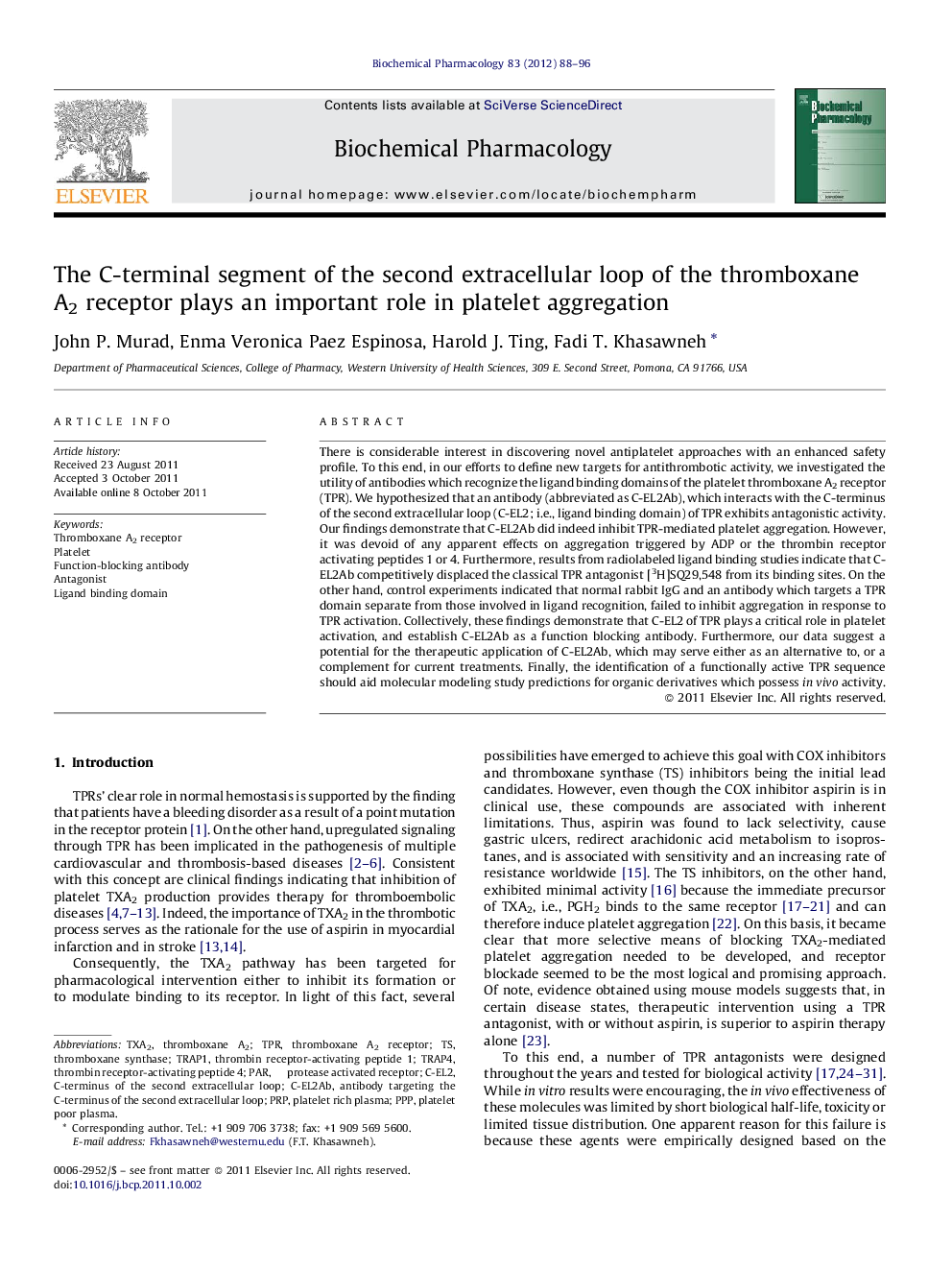| Article ID | Journal | Published Year | Pages | File Type |
|---|---|---|---|---|
| 2512713 | Biochemical Pharmacology | 2012 | 9 Pages |
There is considerable interest in discovering novel antiplatelet approaches with an enhanced safety profile. To this end, in our efforts to define new targets for antithrombotic activity, we investigated the utility of antibodies which recognize the ligand binding domains of the platelet thromboxane A2 receptor (TPR). We hypothesized that an antibody (abbreviated as C-EL2Ab), which interacts with the C-terminus of the second extracellular loop (C-EL2; i.e., ligand binding domain) of TPR exhibits antagonistic activity. Our findings demonstrate that C-EL2Ab did indeed inhibit TPR-mediated platelet aggregation. However, it was devoid of any apparent effects on aggregation triggered by ADP or the thrombin receptor activating peptides 1 or 4. Furthermore, results from radiolabeled ligand binding studies indicate that C-EL2Ab competitively displaced the classical TPR antagonist [3H]SQ29,548 from its binding sites. On the other hand, control experiments indicated that normal rabbit IgG and an antibody which targets a TPR domain separate from those involved in ligand recognition, failed to inhibit aggregation in response to TPR activation. Collectively, these findings demonstrate that C-EL2 of TPR plays a critical role in platelet activation, and establish C-EL2Ab as a function blocking antibody. Furthermore, our data suggest a potential for the therapeutic application of C-EL2Ab, which may serve either as an alternative to, or a complement for current treatments. Finally, the identification of a functionally active TPR sequence should aid molecular modeling study predictions for organic derivatives which possess in vivo activity.
Graphical abstractFigure optionsDownload full-size imageDownload as PowerPoint slide
